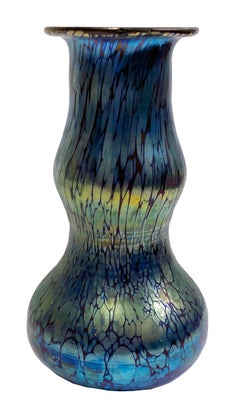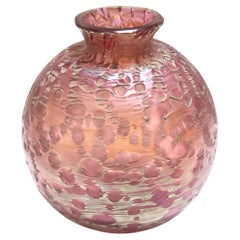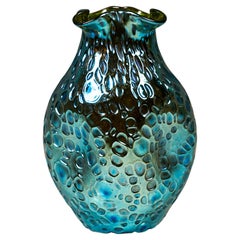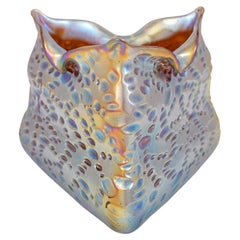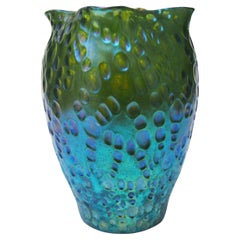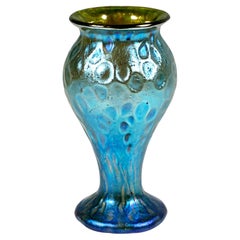Loetz Diaspora
Early 20th Century Art Nouveau More Art
Glass
Vintage 1920s European Art Deco Vases
Blown Glass
Antique Early 1900s Austrian Art Nouveau Glass
Glass
Antique Early 1900s Austrian Jugendstil Glass
Art Glass, Blown Glass
Recent Sales
Antique Early 1900s Czech Art Nouveau Glass
Art Glass
Antique Early 1900s Austrian Art Nouveau Glass
Glass
Antique Early 1900s Austrian Art Nouveau Glass
Glass
Antique Early 1900s Austrian Art Nouveau Glass
Glass
Antique Early 1900s Austrian Art Nouveau Glass
Art Glass
People Also Browsed
2010s British Organic Modern Decorative Bowls
Brass
Early 20th Century French Art Deco Vases
Art Glass
Vintage 1970s Italian Mid-Century Modern Vases
Murano Glass
21st Century and Contemporary Italian Modern Bookcases
Marble
Early 20th Century Chinese Sculptures and Carvings
Coral
Antique Early 19th Century Swedish Gustavian Secretaires
Brass
20th Century North American Modern Paintings
Canvas
2010s Indian Organic Modern Animal Sculptures
Nickel
20th Century French Art Deco Vases
Art Glass
Early 20th Century Arts and Crafts Table Clocks and Desk Clocks
Metal
21st Century and Contemporary Italian Mid-Century Modern Wall Mirrors
Brass
Vintage 1930s French Art Deco Decorative Boxes
Silver
Antique 1890s French Art Nouveau Glass
Glass
Vintage 1940s French Art Deco Sideboards
Bronze
Antique 1890s French Art Nouveau Glass
Art Glass
Early 20th Century American Art Nouveau Table Lamps
Bronze, Lead
Loetz Glass for sale on 1stDibs
Best known to collectors for their magnificent Marmoriertes and Phänomen glass creations, the Loetz Glass company was a leading Art Nouveau producer of fine glass vases, bowls and other decorative objects through the mid-19th and early 20th centuries.
Shortly before his death in 1855, attorney Frank Gerstner transferred sole ownership of his glassworks company to his wife Susanne. The company, which was founded in what is now the Czech Republic in 1836 by Johann Eisner, was renamed Johann Loetz Witwe by Susanne Gerstner as a tribute to her late husband who preceded Gerstner, a glassmaker named Johann Loetz (Loetz was also known as Johann Lötz).
For 20 years, Gerstner led the company, expanding its manufacturing and distribution capacity. It proved profitable, but the glassworks' popularity didn't start gaining significant momentum until after Gerstner transferred sole ownership to her grandson Maximilian von Spaun in 1879.
Von Spaun and designer Eduard Prochaska developed innovative techniques and solutions for reproducing historical styles of decorative glass objects, such as the very popular marbled Marmoriertes glass — a technique that lends glass an appearance that is similar to semi-precious stones such as onyx or malachite. Under von Spaun’s leadership, the firm’s works garnered them success in Brussels, Vienna and Munich, and Johann Loetz Witwe won awards at the Paris World Exposition in 1889. In 1897 von Spaun first saw Favrile glass in Bohemia and Vienna.
The work in Favrile glass, a type of iridescent art glass that had recently been developed and patented by Louis Comfort Tiffany, founder of iconic American multimedia decorative-arts manufactory Tiffany Studios, inspired von Spaun to explore the era’s burgeoning Art Nouveau style — or, as the firm was established in a German-speaking region, the Jugendstil style.
The company partnered with designers Hans Bolek, Franz Hofstötter and Marie Kirschner and thrived until von Spaun passed it down to his son, Maximilian Robert.
With the Art Deco style taking shape around the world, the company was unable or unwilling to adapt to change. Loetz Glass collaborated with influential names in architecture and design, including the likes of Josef Hoffmann, a central figure in the evolution of modern design and a founder of the Vienna Secession. Unfortunately, the glassworks’ partnerships did them little good, and the company’s mounting financial problems proved difficult to navigate. Two World Wars and several major fires at the glassworks took their toll on the firm, and in 1947 the Loetz Glass Company closed its doors for good.
Today the exquisite glass produced by Loetz Glass Company remains prized by collectors and enthusiasts alike.
On 1stDibs, find antique Loetz Glass Company glassware, decorative objects and lighting.
A Close Look at Art-nouveau Furniture
In its sinuous lines and flamboyant curves inspired by the natural world, antique Art Nouveau furniture reflects a desire for freedom from the stuffy social and artistic strictures of the Victorian era. The Art Nouveau movement developed in the decorative arts in France and Britain in the early 1880s and quickly became a dominant aesthetic style in Western Europe and the United States.
ORIGINS OF ART NOUVEAU FURNITURE DESIGN
- Emerged during the late 19th century
- Popularity of this modernizing style declined in the early 20th century
- Originated in France and Britain but variants materialized elsewhere
- Informed by Rococo, Pre-Raphaelite art, Japanese art (and Japonisme), Arts and Crafts; influenced modernism, Bauhaus
CHARACTERISTICS OF ART NOUVEAU FURNITURE DESIGN
- Sinuous, organic and flowing lines
- Forms that mimic flowers and plant life
- Decorative inlays and ornate carvings of natural-world motifs such as insects and animals
- Use of hardwoods such as oak, mahogany and rosewood
ART NOUVEAU FURNITURE DESIGNERS TO KNOW
ANTIQUE ART NOUVEAU FURNITURE ON 1STDIBS
Art Nouveau — which spanned furniture, architecture, jewelry and graphic design — can be easily identified by its lush, flowing forms suggested by flowers and plants, as well as the lissome tendrils of sea life. Although Art Deco and Art Nouveau were both in the forefront of turn-of-the-20th-century design, they are very different styles — Art Deco is marked by bold, geometric shapes while Art Nouveau incorporates dreamlike, floral motifs. The latter’s signature motif is the "whiplash" curve — a deep, narrow, dynamic parabola that appears as an element in everything from chair arms to cabinetry and mirror frames.
The visual vocabulary of Art Nouveau was particularly influenced by the soft colors and abstract images of nature seen in Japanese art prints, which arrived in large numbers in the West after open trade was forced upon Japan in the 1860s. Impressionist artists were moved by the artistic tradition of Japanese woodblock printmaking, and Japonisme — a term used to describe the appetite for Japanese art and culture in Europe at the time — greatly informed Art Nouveau.
The Art Nouveau style quickly reached a wide audience in Europe via advertising posters, book covers, illustrations and other work by such artists as Aubrey Beardsley, Henri de Toulouse-Lautrec and Alphonse Mucha. While all Art Nouveau designs share common formal elements, different countries and regions produced their own variants.
In Scotland, the architect Charles Rennie Mackintosh developed a singular, restrained look based on scale rather than ornament; a style best known from his narrow chairs with exceedingly tall backs, designed for Glasgow tea rooms. Meanwhile in France, Hector Guimard — whose iconic 1896 entry arches for the Paris Metro are still in use — and Louis Majorelle produced chairs, desks, bed frames and cabinets with sweeping lines and rich veneers.
The Art Nouveau movement was known as Jugendstil ("Youth Style") in Germany, and in Austria the designers of the Vienna Secession group — notably Koloman Moser, Josef Hoffmann and Joseph Maria Olbrich — produced a relatively austere iteration of the Art Nouveau style, which mixed curving and geometric elements.
Art Nouveau revitalized all of the applied arts. Ceramists such as Ernest Chaplet and Edmond Lachenal created new forms covered in novel and rediscovered glazes that produced thick, foam-like finishes. Bold vases, bowls and lighting designs in acid-etched and marquetry cameo glass by Émile Gallé and the Daum Freres appeared in France, while in New York the glass workshop-cum-laboratory of Louis Comfort Tiffany — the core of what eventually became a multimedia decorative-arts manufactory called Tiffany Studios — brought out buoyant pieces in opalescent favrile glass.
Jewelry design was revolutionized, as settings, for the first time, were emphasized as much as, or more than, gemstones. A favorite Art Nouveau jewelry motif was insects (think of Tiffany, in his famed Dragonflies glass lampshade).
Like a mayfly, Art Nouveau was short-lived. The sensuous, languorous style fell out of favor early in the 20th century, deemed perhaps too light and insubstantial for European tastes in the aftermath of World War I. But as the designs on 1stDibs demonstrate, Art Nouveau retains its power to fascinate and seduce.
There are ways to tastefully integrate a touch of Art Nouveau into even the most modern interior — browse an extraordinary collection of original antique Art Nouveau furniture on 1stDibs, which includes decorative objects, seating, tables, garden elements and more.
Finding the Right Glass for You
Whether you’re seeking glass dinner plates, centerpieces, platters and serveware or other items to elevate the dining experience or brighten the corners of your living room, bedroom or other spaces by displaying decorative pieces, find an extraordinary range of antique, new and vintage glass on 1stDibs.
Glassmaking is more than 4,000 years old. It is believed to have originated in Northern Mesopotamia, where carved glass objects were the result of a series of experiments led by potters or metalworkers. From there, the production of glass vases, bottles and other objects proliferated in Egypt under the reign of Thutmose III. Later, new glassmaking techniques took shape during the Hellenistic era, and glassblowing was invented in contemporary Israel. Then, on the island of Murano in Venice, Italy, modern art glass as we know it came to be.
Over the years, collectors of glass decorative objects or serveware have sought out distinctive antique and vintage pieces of the mid-century modern, Art Deco and Art Nouveau eras, with artisans such as Archimede Seguso, René Lalique and Émile Gallé of particular interest for the pioneering contributions they made to the respective styles in which they worked. Today, long-standing glassworks such as Barovier&Toso carry on the Venetian glasswork tradition, while modern furniture designers and sculptors such as Christophe Côme and Jeff Zimmerman elsewhere test the limits of the radical art form that is glassmaking.
From chandeliers to Luminarc stemware, find a collection of antique, new and vintage glass on 1stDibs.
